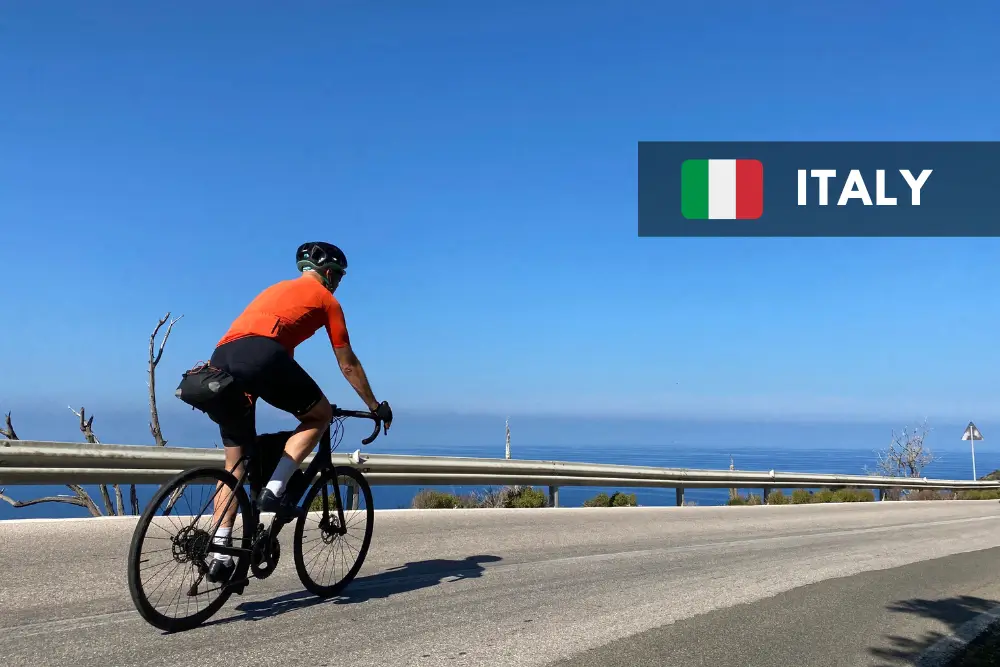Prologue
Tuscany is a dream destination for cycling lovers who enjoy discovering historic architecture, scenic landscapes, and tasty cuisine. This article will take you through our week-long cycling tour of this charming Italian region.
Our group of 4 cyclists covered almost 1,000 kilometres and climbed 11,000 meters, visiting Prato, Florence, Siena, Grosseto, Livorno, Pisa, and Lucca provinces. We will share our itinerary, tips, and suggestions to help you plan your cycling adventure in Tuscany.
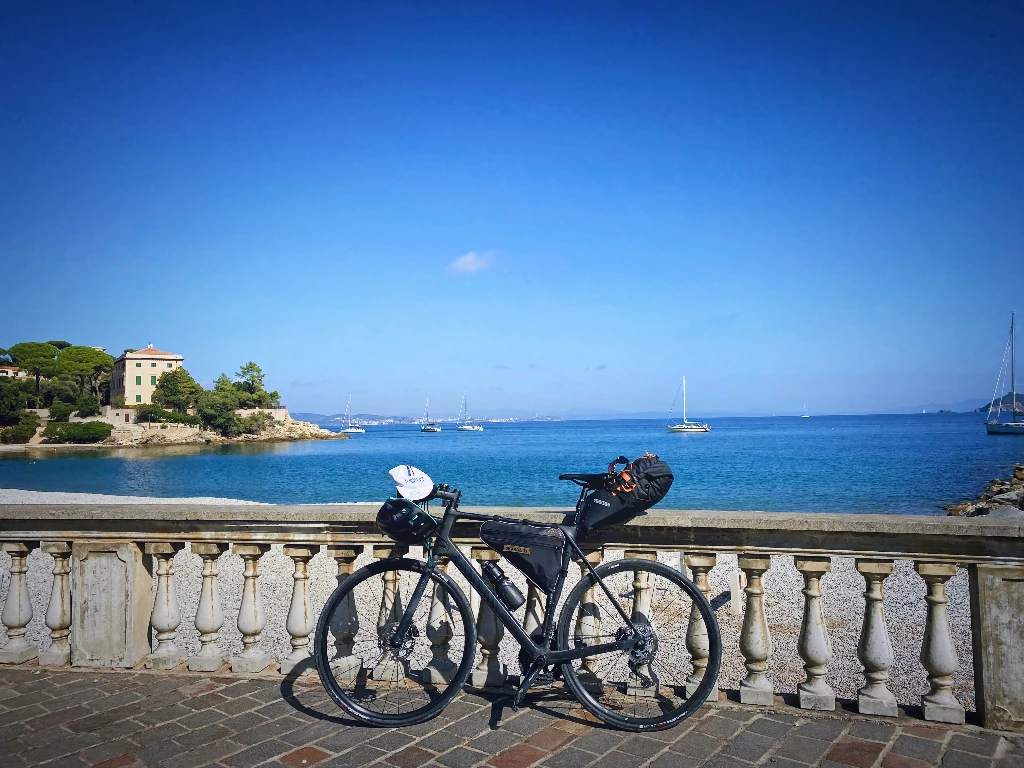
Route summary
The Tuscany cycling tour begins in the Apennines mountain range near Prato. After leaving the high mountain massif, you will cycle towards Florence and later enter the Chianti Valley, famous for its rolling hills, lush vineyards, and world-renowned red wine.
Moving forward, you will reach Siena, a perfect tourist destination. The old town is a UNESCO World Heritage Site home to several historic landmarks such as the Siena Cathedral and the Piazza del Campo.
Continuing the tour, you will arrive in the heart of Tuscany. You will visit Saturnia, known for its thermal springs, a popular destination seeking relaxation and rejuvenation.
Next, it will be the beautiful Monte Argentario peninsula. It is known for its stunning coastline, crystal-clear waters, and picturesque villages. You will cycle through the winding roads of the peninsula, stopping at various villages to explore their unique character and charm.
Another memorable region on the way will be the marvellous Elba Island. You will stay there for two nights and try popular cycling routes.
Following the coastline, you will reach the towns of Pisa and Lucca, renowned for their rich cultural heritage, stunning architecture, and vibrant atmosphere.
The final leg of our tour will take you back to the mountain massif again, allowing you to experience the Apennines’ life and beauty one more time.
Day 1: Cavarzano – Siena

Your adventure starts in the high Apennines, where you will face some challenging uphill segments, followed by exhilarating downhill slopes. By noon, you will reach the splendid city of Florence, the birthplace of the Italian Renaissance and the former capital of the Kingdom of Italy.

Florence is home to some of the most magnificent art masterpieces in the world, such as the Duomo, the largest masonry dome ever built, and the Ponte Vecchio, the only bridge that Hitler did not destroy in World War II.
Since Florence is a big city, you need a lot of time to see it all. Biking in the old town is challenging. This time, you might want to go to Piazzale Michelangelo and glance at the beautiful panorama of Florence. You can visit the other parts of the city next time. Alternatively, you can choose Florence as a starting point for the whole tour and explore it a day before leaving if that works for you.



Moving forward, you will get into a hilly area with a small mountain range that separates Florence from Siena, a Chianti Valley. The region is famous for its wines, but also Chianti is a cycling paradise in Italy. Did you know that Chianti Valley is home to the Eroica, a cycling event that celebrates the epic cycling of the past? Along the ancient streets that sometimes turn into dirt roads, you will encounter many cyclists of different levels, from beginners to experts. However, following our original route, you will always stay on the tarmac surface.
You will end the day at the town of Siena, where you can enjoy its rich history and culture. Siena is known for its medieval architecture, art, and cuisine. Explore the old town on foot and taste the local dishes. Siena has a variety of culinary delights, such as pici, a kind of thick homemade pasta, panforte, a spiced fruit cake, and ricciarelli, almond cookies. You can also sample local cheeses, such as pecorino and caciotta.
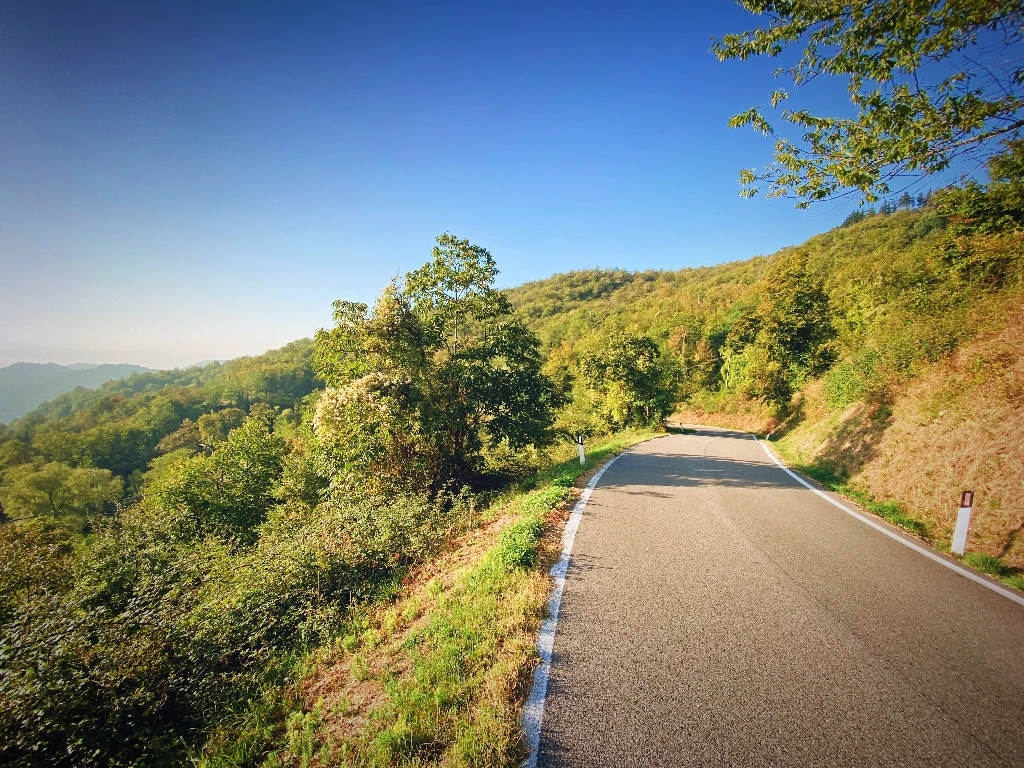


Day 2: Siena – Saturnia

On the second day, you will enter the Val d’Orcia region that extends from the hills south of Siena to Monte Amiata, an extinct volcano. It is a UNESCO World Heritage Site for its natural and cultural beauty, featuring gentle hills, vineyards, cypresses, medieval towns and castles.



The first village you will reach is Montalcino, a stunning hilltop town in Tuscany. 30 kilometres to get to it from Siena are entirely flat, but then you will face a challenging climb of 400 meters to the centre. Montalcino is famous for its Brunello di Montalcino wine, one of the world’s finest and longest-aging wines. It is also a medieval town with a rich history and beautiful views over the valleys of Tuscany.
After 20 kilometres, you will reach another beautiful village called Castiglione d’Orcia. It is located on a hill, too. So you will have to climb up again. It is a great place to have a break and enjoy some lunch. I recommend Il Cerchio Delle Streghe, a restaurant with a lovely view and delicious food.
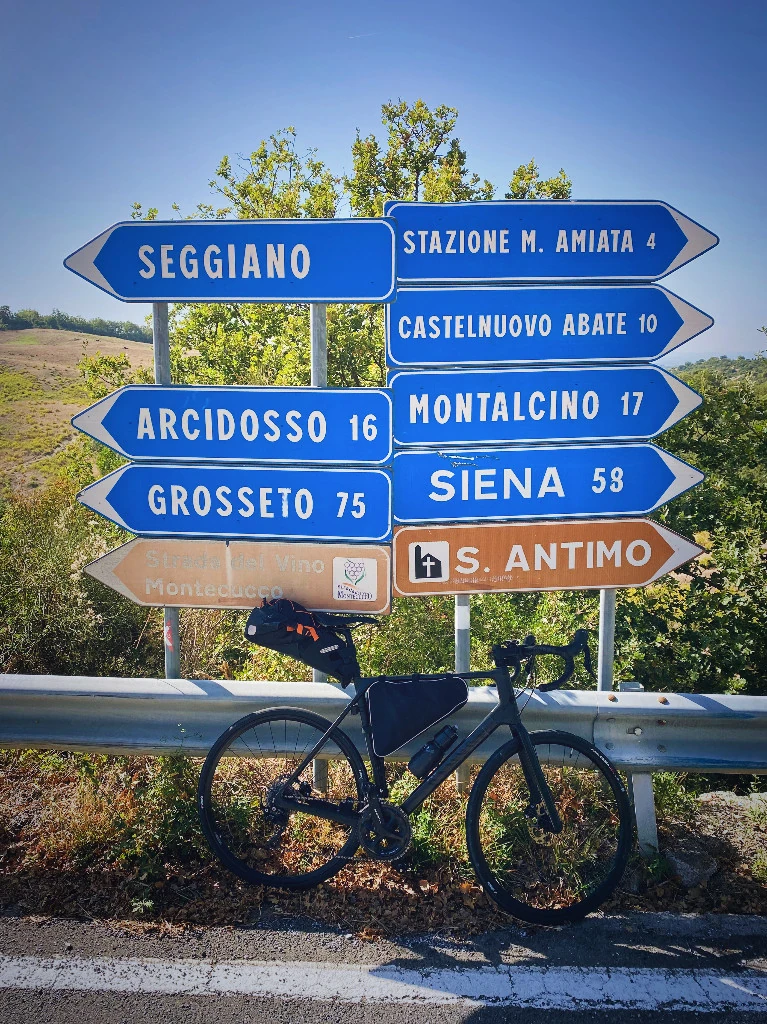

In the afternoon, you will have a wonderful and peaceful ride on the provincial roads with little traffic until you reach Saturnia. Eventually, you will get to 900 m elevation and finish the day with a long downhill to Saturnia.
In the evening, try out an attraction – thermal baths near Saturnia. They are known as Cascate del Mulino, which means Mill Falls. The water of these natural hot springs is rich in minerals and has a temperature of about 37 degrees Celsius. The springs are fed by a large area of geothermal waters that stretch from Mount Amiata to the hills of Fiora and Albegna.



Day 3: Saturnia – Grosseto

Don’t worry if your hotel doesn’t include breakfast because you can find an excellent Espresso bar in Manciano called Bar Bellavista. The name says it all. They have a lovely terrace with a stunning view. It is a perfect place to enjoy morning coffee with a fresh cornetto or sandwich.


The highlight of today’s trip will be the peninsula of Monte Argentario. You should get there before lunch. I recommend cycling anticlockwise towards the western part through Porto Santo Stefano. The advantage of riding anticlockwise is that you are closer to the edge of the road, and you can see the views down below better.
After Porto Santo Stefano, the peninsula becomes even more gorgeous. In the west, you will admire the coastline and the blue waters. On the horizon, you will see the island of Giglio. The road is well-paved and has many summerhouses and villas along the way. After Calla Piccola, the area is more deserted, and the terrain is rougher.


We cycled around the whole peninsula. Be careful when planning your attempt because the last 6 kilometres to Porto Ercole are on a wretched gravel road. You can’t ride a road bicycle on that section.


I would probably choose another option next time. After seeing the peninsula’s south, you can ride back a few kilometres and turn to Porto Santo Stefano near Cala Piccola on a different road. You can reach Porto Ercole through the northern side and avoid the gravel road.
You will enjoy a lunch break in Porto Ercole. There are some nice spots in the port to bite and relax after a challenging ride on the peninsula.
The final 50 kilometres to Grosseto are less exciting, and there is nothing to see. Ensure you avoid our route after Albinia towards Fonteblanda because it leads to a dead end. The bike path suddenly stops. The only way out is to cross a four-lane highway with heavy traffic. We had to do that while the trucks honked at us to get off the road. It was very scary. I suggest you take the route through San Donato Vecchio instead.
Day 4: Grosseto – Porto Azzurro

Today’s objective is to reach Elba Island. You’ll start cycling on a well-maintained bicycle path to Marina di Grosseto. Later, until Follonica, you will get onto a narrow cycling path that vacationers mainly use. The last part of Piombino is dull and crowded, so be prepared to cycle through it as quickly as possible. The second part of the day will be more relaxing.
You should aim to reach the Piombino port by lunchtime so you can board the 12:20 ferry from Piombino to Cavo. The fare for one person with a bike is around 24 Euros (you can find the exact timetables and prices here). And yes, they do charge extra for bikes. This is the first time I’ve encountered a ferry line that does that.
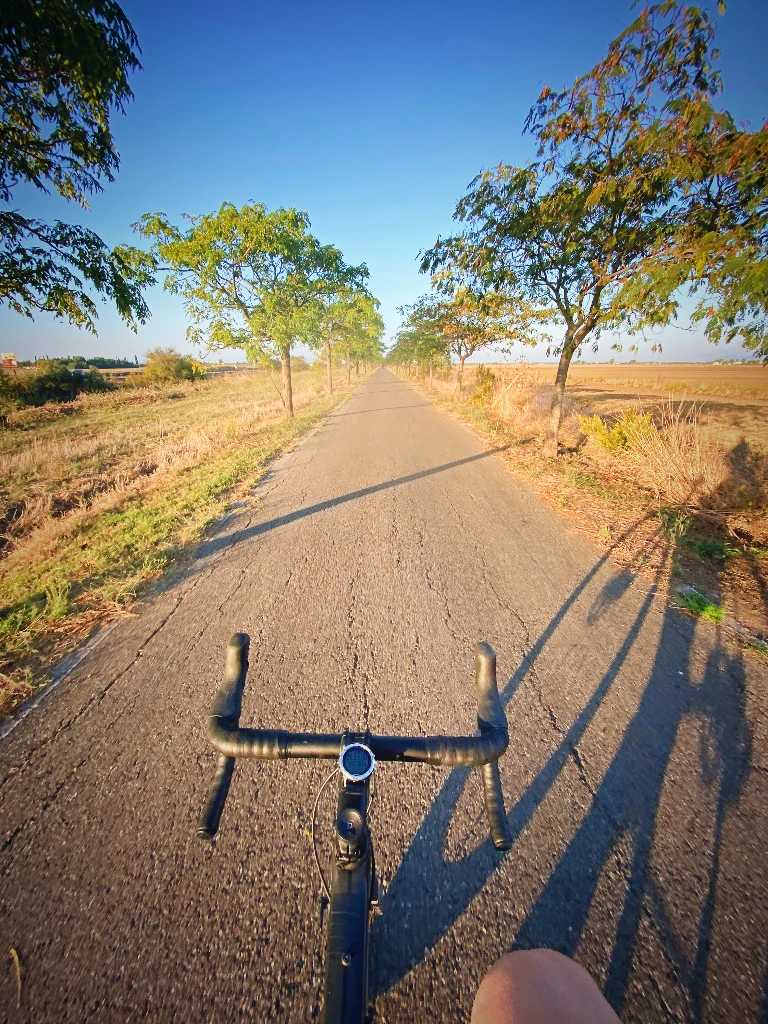


You will reach Elba in about 20 minutes by ferry. You can enjoy a delicious lunch at a nearby pizzeria as soon as you land. Rendez Vous Pizzeria is a great choice, with its mouth-watering food and beachfront location. We had fantastic meals there two times.
You have the rest of the day to explore Elba at your own pace. Porto Azzuro is an hour away from Cavo by bike. You can either head straight to the hotel and relax by the pool or the beach or take a scenic detour and visit the charming resorts of Nisporto, Bagnaia, and Magazzini.
I opted for the northern route of the island, which was rugged but stunning. The other friends preferred a more laid-back afternoon and also had a wonderful time.



Your day will consist of cycling between 80 and 110 kilometres, which is relatively easy compared to other days. We design our tours to include one light day as a rest day. It is better to cycle less on one day than to have a whole day off the bike. This way, you can maintain your rhythm and give your body a chance to recover.
Porto Azzurro, formerly known as Porto Longone (because of the prison housed inside the Fortress of Longone), is a lovely fishermen’s village on the east side of Elba island. It has a good marina, a beautiful seaside square, and picturesque alleys with shops, bars, restaurants, and craft stalls in the evening. It is a highly recommended place to stay, have a walk, swim, or just happily spend time with your cycling friends.
Day 5: Porto Azzuro – Cavo

Your morning ride begins with a scenic route to Rio nell’Elba, where you will encounter the first ascent of Le Panche. As you climb, you will be rewarded with a stunning view of Portoferrario Bay, where the sun shines on the water. There is a picnic spot where you can take a break and admire the beauty of nature.



After 15 kilometres, you will arrive at Portoferrario, the capital and main port of Elba Island. This ancient town has a rich history that dates back to the Ligurians, Etruscans and Greeks. It was also the home of Napoleon Bonaparte during his first exile in 1814-1815. You can explore its impressive fortifications, museums and villas that testify to its cultural heritage.
As you will head to Marciana Marina, the landscape changes a bit. The road follows the coast, with large trees and green plants providing shade. After leaving Portoferrario, the traffic becomes less and the road smoother. You can relax on this flat stretch and see the Procchio, Sprizze, and Bagno villages along the way.
From Marciana Marina, you will face the second ascent of the day to Marciana. You have two options: the main road through Poggio, which is more gentle but longer, or my route along Via Costarella, which is shorter but steeper. Some parts of Via Costarella have a 20% gradient, so be sure you can handle it.
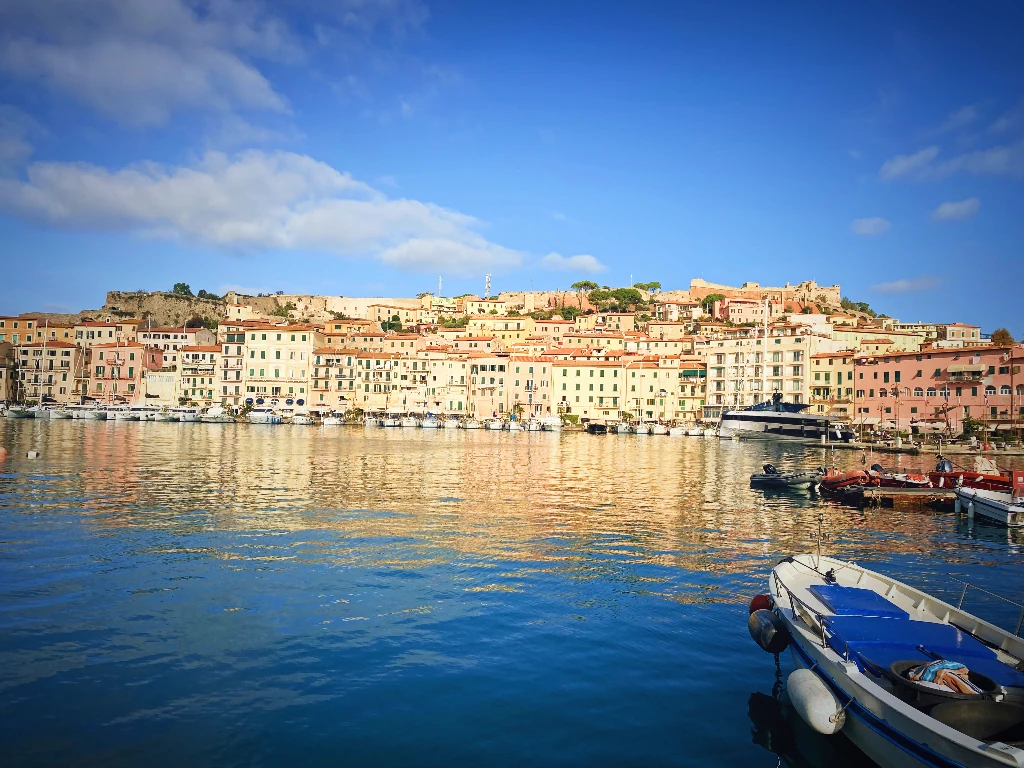


In Marciana, you can relax and admire the splendid view of the sea and the mountains. Marciana is one of the oldest villages on Elba Island, with a rich history and culture. You can visit the Civic Archeological Museum to see ancient artefacts and learn about the island’s origins. You can also explore the Pisan Fortress, a medieval castle that offers a panoramic view of the surroundings.
You will be amazed by the diverse and beautiful views approaching the western part of Elba Island. The sea glitters below the cliffs, and you can find many places to pause and appreciate the scenery. The vegetation is sparse on this dry part of the island. On your way to Pomonte, you will pass by the quaint villages of Colle d’Orano and Chiessi.
Pomonte is an ideal spot for lunch. Here, you can get delicious risotto or lasagna at Pomonts Bar. You can also visit the Pomonte beach for some relaxation. Or, you can continue for 13 kilometres to Fetovaia beach, which has a beautiful swimming area.
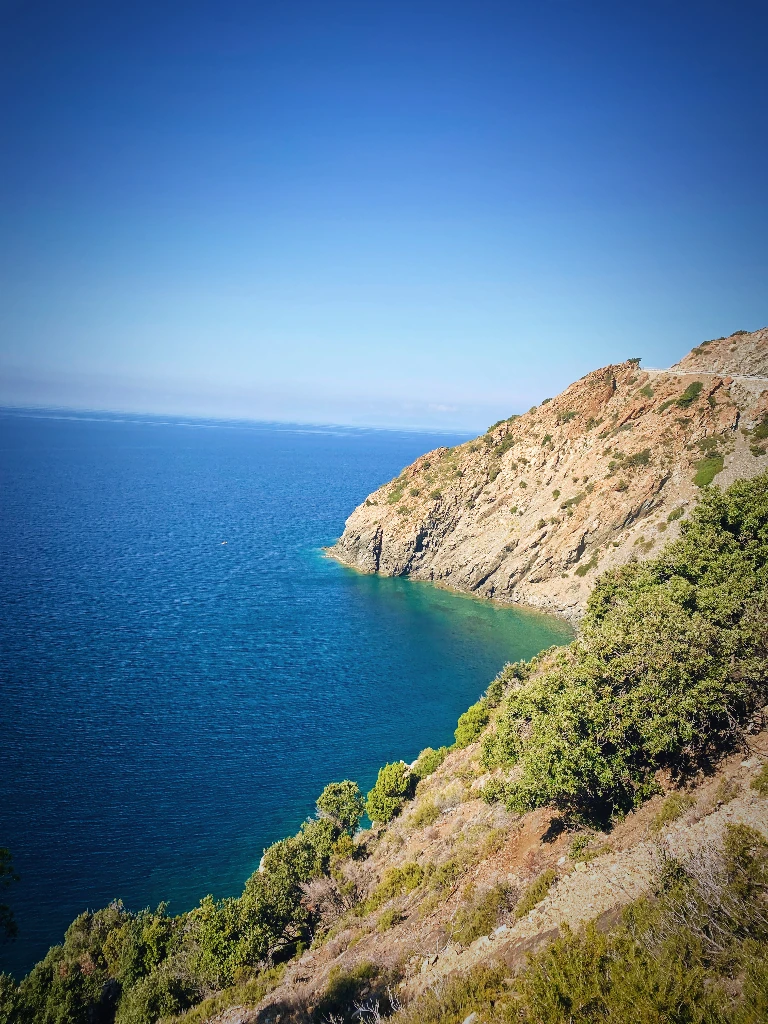


The third ascent of the day awaits you after Marina di Campo. It is a brief climb, so you will reach the main road connecting Portoferrario and Porto Azzurro in less than an hour. Then, you will head to Capoliveri, a charming medieval village on a hilltop overlooking the sea. Capoliveri is worth visiting for its rich history, culture and natural beauty. It is surrounded by nature, with green hills, rocky cliffs and wildflowers.
You will return to Cavo by taking a different road through Rio Marina. On this route, you will see the mining sites beyond Rio Marina. These mines were once the primary source of iron ore on Elba Island, attracting ancient civilizations like the Etruscans and Romans. You can learn more about the history and geology of the mines by visiting the Mineral Park or the Valle Giove mine, where you can also find some mineral samples.
Day 6: Piombino – Lucca

Day six will be full of town exploration. Therefore, I recommend you take the first ferry in the morning going from Cavo to Piombino. It departs at 7:10 AM, so you must get up early. The best option is to get accommodation somewhere near the Port. You might miss some extra sleep, but you’ll be rewarded with breathtaking views. On your way back to Piombino, you can admire the beautiful sunrise and see how the sun emerges from behind the other islands.
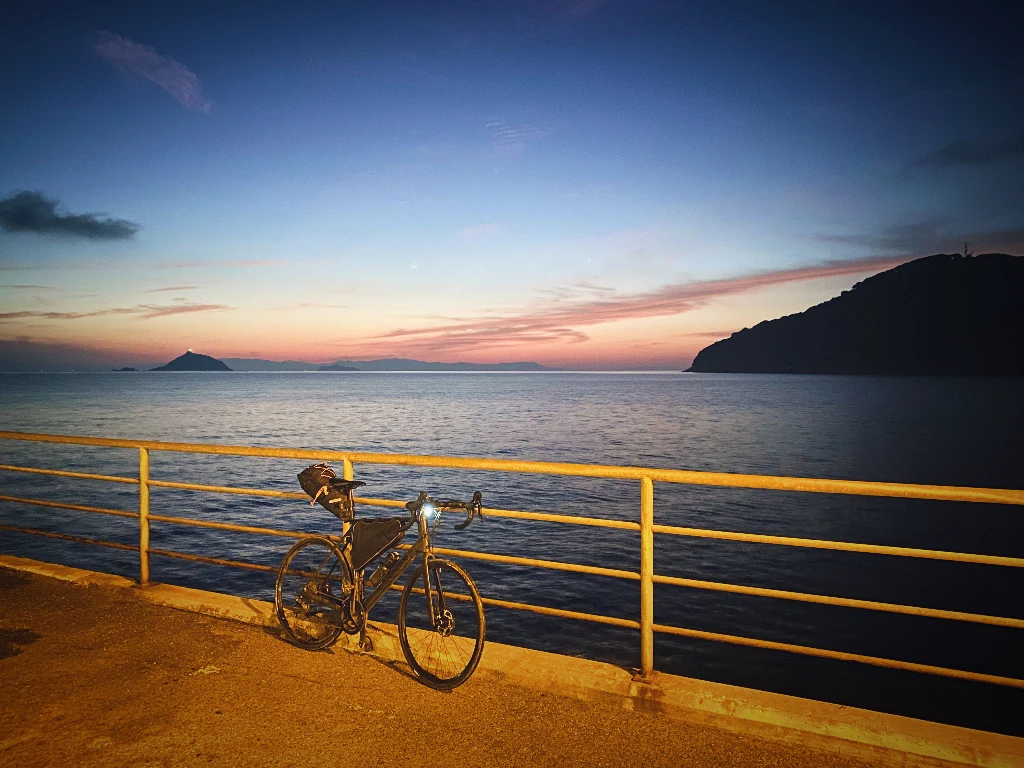

The road from Piombino could be more scenic for the first 60 kilometres, but you can still spot some charming Tuscan villas. Getting closer to Livorno, there is a lovely 15-kilometre section where the roads run along the mountainous coastline.
For the lunch stop, I recommend Livorno. Besides the food, the city has some tourist attractions you can visit afterward. Some of the highlights are the following:
- Terrazza Mascagni is a picturesque seaside walkway with a striking contrast of black and white tiles on the ground.
- The Port is a lively centre of naval activity where you can watch ships, ferries, and the historic maritime vessel Amerigo Vespucci come and go.
- Nuova Venezia (New Venice) is a quaint district with canals and bridges built in the 1600s.
Tirrenia, a seaside resort town, will be your next waypoint on the route after leaving Livorno. You can enjoy the sizeable coastal beach, surrounded by an expansive Mediterranean pine forest, and has various facilities for swimming and leisure. This town is one of Italy’s most expensive places to live by the sea. You will ride your bike along the coast for 10 kilometres and then take the cycle path leading to Pisa.
Pisa is a world-renowned city in Italy, famous for its iconic leaning tower. You should see this architectural wonder first. But if you have enough time, don’t miss the other attractions that Pisa has to offer, such as:
- The Cathedral of Santa Maria Assunta – a masterpiece of Romanesque art built in the 11th and 12th centuries.
- The Baptistery – a circular building that stands opposite the cathedral.


Lucca is the final destination and the place to stay overnight for today. It is a splendid town with many history, charm, and attractions. Here are some of the things you can do in Lucca:
- Explore the city walls that encircle the old town. You can walk or bike on these walls, which are in good condition and offer a fantastic view of the town and the countryside.
- Visit the Lucca Cathedral, a remarkable example of Romanesque architecture from the 11th century. The cathedral has a lovely facade, a splendid interior, and a bronze door by Bonanno Pisano.
- Relax in the Piazza dell’Anfiteatro, a square that used to be a Roman amphitheatre. The square has a unique elliptical shape and is surrounded by colourful buildings, cafes, and shops.
Day 7: Lucca – Cavarzano

The last day of the tour will take you back to the Apennines mountain range. You will start from Lucca and head to Pescia, where you will leave behind the urban areas and immerse yourself in the mountainous landscape of Italy.
The road to Prunetta, a village in the hills, will be your day’s first challenge. It is a 30-kilometre climb with a 3.1% average gradient. You will enjoy the scenery of the forests and mountains as you reach the summit of 963 meters.

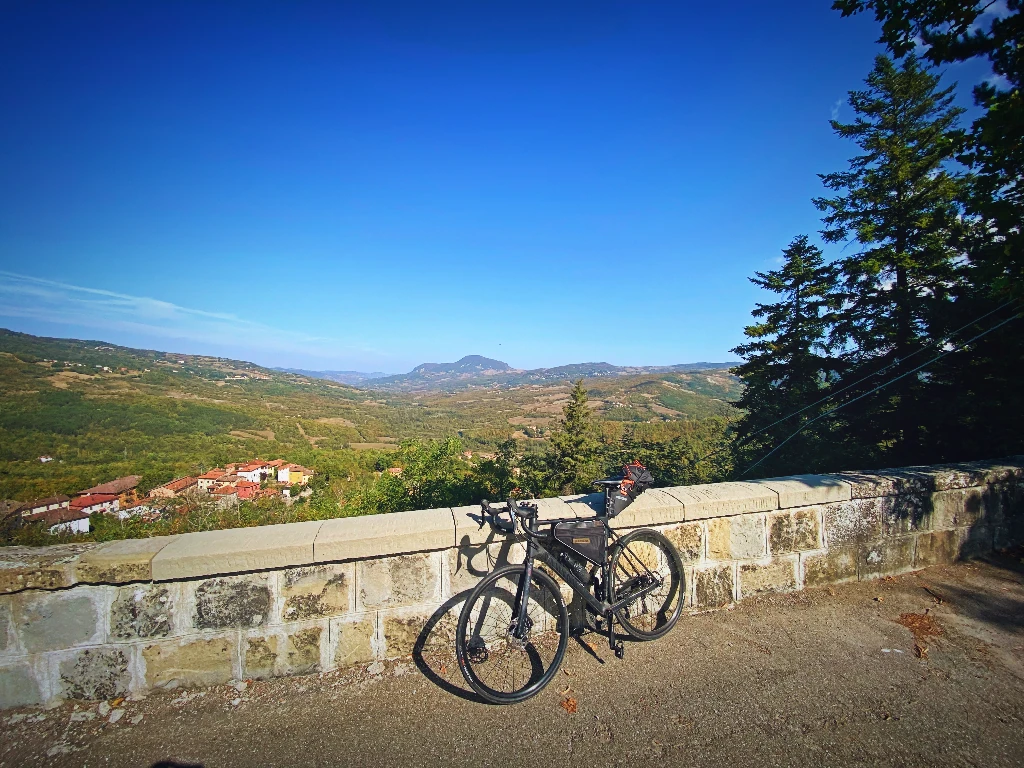

For us, the climb was enjoyable and exciting. As it was a Saturday, we met a lot of local cyclists on the road. The scenery was constantly changing, and we had a chance to see life in the small villages and houses along the way.
There are no groceries on the way, but once you reach Prunetta, there is a small one where you can buy snacks or refreshments.
After that, you will enjoy a smooth downhill ride to Ponte della Venturina along the Reno River. The roads are primarily car-free, and I loved pedalling for the next 30 kilometres with ease.
In the final section, you will briefly visit the Emilia Romagna region and experience three easy climbs near Suviana, Barceda, and Castiglione dei Pepoli.

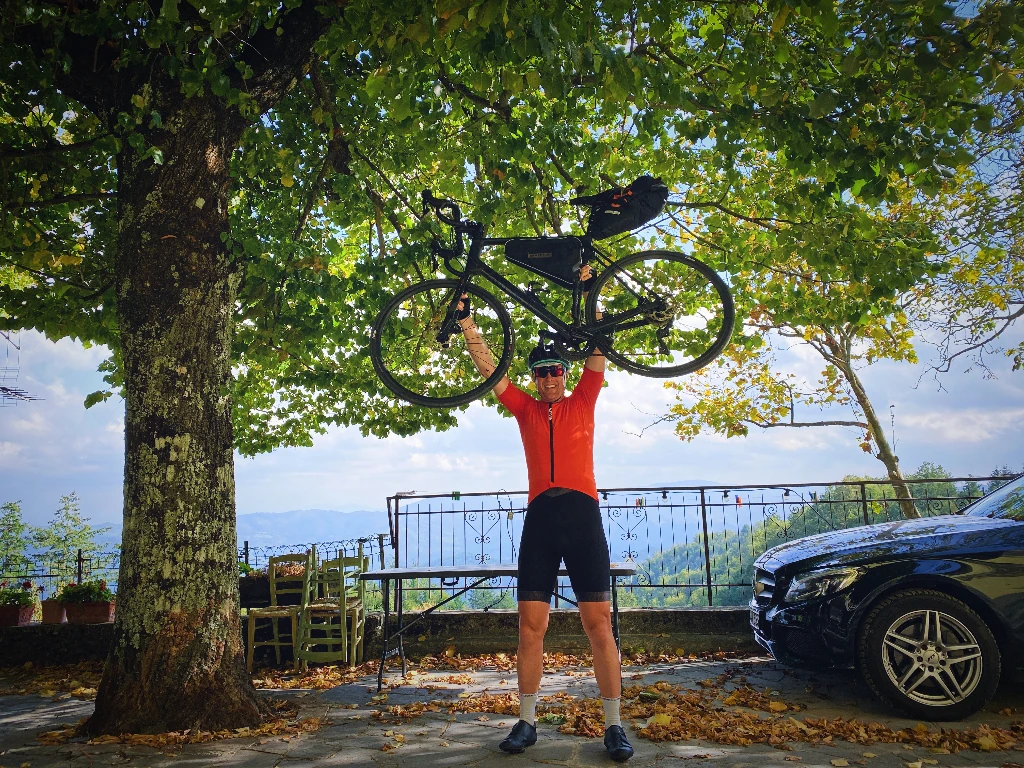
Our 7-day tour ended in a small village called Cavarzano, where we had a cycling base. I suppose your ending point could be Vernio or Prato, which are reachable in one hour where we stopped.
I hope the final day of cycling in the Apennines mountains will become a highlight of the whole tour, as it happened to me.
Thanks for reading!
